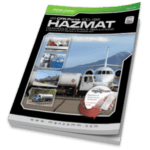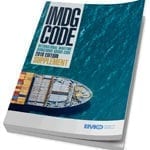This post was originally published in June 2018 and has been updated in August 2020 for accuracy.
Regular Damaged or Defective or Dangerous Damaged or Defective?
There is a fair amount of interest in the topic of preparing Damaged or Defective (DoD) lithium batteries for transport and how to make a determination of the degree of hazard they present.
The current (20th) 2017 Edition of the Recommendations on the Transport of Dangerous Goods (UN Model) Regulations have addressed the former (packaging for transport) aspect, but the documents currently posted have not yet established firm protocols for the latter.
The situations involving recalls of defective, unsafe batteries and incidents during transportation has sustained the efforts to find better ways of dealing with them. The topic has been under discussion at the United Nations Sub-Committee of Experts on the Transportation of Dangerous Goods (TDG) in most sessions over the last several years.
For this discussion we’ll refer to cells/batteries that do not meet the UN Manual of Test criteria due to damage or defect, without specific safety hazards, as “regular” DoD; and those that “are liable to disassemble rapidly, react dangerously, produce a flame or a dangerous evolution of heat, or produce a dangerous emission of toxic, corrosive or flammable gases or vapours” as “dangerous” DoD.
This distinction is proposed for clarification in the next version (21st Edition) of the UN Model. See, for example, working document ST/SG/AC.10C.3/2018/51:
http://www.unece.org/fileadmin/DAM/trans/doc/2018/dgac10c3/ST-SG-AC.10-C.3-2018-51e.pdf
Batteries or Reactive Substances?
As a technicality, we should pause to consider the basic classification aspects in the context of Class 9 dangerous goods (DG). The lithium metal/compounds in batteries would typically result in a hazard Class 4 danger if they were not incorporated into properly designed battery with safety features to prevent the hazardous reactions. The fact that a battery is DoD means that the safety features may have been breached to the point where one is shipping a reactive substance with some or all of the dangers at play- i.e. it conceivably will no longer pass the tests that allow it to be shipped as a Class 9 battery.
The question is the risk reduction that can be assumed in shipping what is a “partial battery” with some of the safety features in place. If the battery had partially decomposed, then the DG that it contained may be either more or less hazardous depending on the type of decomposition.
Packaging by the Rules
The various regulations (for the point of this discussion we’ll consider the Canadian TDG, IATA DGR, IMDG Code, UN Model, and US 49 CFR) have similar but not identical approaches.
IATA DGR
We’ll start with the simplest. IATA DGR forbids for transport lithium batteries of a type “identified by the manufacturer as being defective for safety reasons” or “that have been damaged” – special provision (SP) A154. Any shipment for recycle or disposal must be approved as specified in SP A183, presumably allowing the state (government) to assure that precautions are adequate in identifying and compensating for the potential hazards.
UN Model Regulations
The UN Model regulation is somewhat ahead of the pack in that there are assigned packaging instructions unique to “regular” DoD and “dangerous” DoD batteries. SP 376 references, for small and large packages respectively, P908 and LP904 at the PG II quality level for regular DoD. P908 doesn’t automatically restrict the number of batteries (or pieces of equipment containing them) unless the battery (or cell) has a net mass exceeding 30 kg. In this case the limit is 1 item per package. LP904 limits it to 1 item period. Both require the use of non-combustible cushioning/insulation. LP904 doesn’t allow the use of 50G (fibreboard) outer packaging.
SP 376 assigns “dangerous” DoD batteries to separate PI, P911 and LP906, either of which must meet PGI quality level. Although each of these provides for using fibreboard outer packaging, there is a requirement to determine specific performance-related aspects possibly resulting from degradation of the batteries in transport. The responsibility for additional performance criteria is left to the competent authority. Footnotes in P911 and LP906 elaborate on the general criteria to consider in deciding if the assignment in SP376 applies to these PI.
Canada’s Transportation of Dangerous Goods Regulations
The Canadian regulations are currently in transition. The TDGR do not detail packaging within Part 5 of the regulation itself, but reference external standards. Small packaging for Class 9 is found in Transport Canada’s TP14850. This standard is being reviewed and is expected to be re-issued within the year. There is also a large packaging standard being drafted as CGSB 43.145. The current draft of the former contains similar versions to the UN Model P908 and LP904. Since these have not been finalised, TDGR SP137 (TDGR version of UN SP376), currently invokes the UN Model versions.
Neither draft, nor SP137 refer to equivalents to UN Model P911 or LP906.
In fact, SP137(5) states that it “is forbidden to transport” the dangerous DoD batteries.
IMDG Code
Marine shipment is covered in the IMDG SP376, taken from the UN Model pre-2017 edition.
The PI for “dangerous” DoD are not included and the SP references obtaining authorization from the competent authority.
US’s 49 CFR
Last, but not least, 49 CFR deals with the topic in §173.185 (f).
This exception is invoked by the listing in Col. 6A of the §172.101 Hazardous Materials Table.
The requirements are a simplified version of the pre-2017 UN Model.
All packaging must meet PGI quality standards and fibreboard is not authorized for either small or large packaging.
There is no distinction between “regular” or “dangerous” DoD in this section. There is reference in §173.185(g) to obtaining approval.
Interim Process
The message in this is to keep abreast of developments in: improved packaging for DoD lithium batteries, definitions of what is likely to constitute a dangerously defective or damaged battery; in conjunction with using the best quality packaging that will mitigate harmful consequences. In addition, consultation with manufacturers and collection organizations on the preferred approach or availability of special permit-equivalency certificate options will help reduce the risk of transportation related hazardous or regulatory non-compliance incidents.
Additionally for Canadian shippers, documenting any advice, reasoning or justification relating to suppliers’ recalls will aid in justifying classification decisions under TDGR SP137(5), as might be required under Part 2, §2.2.1 or equivalency certificates.
We have all the products, services and training you need to ensure your staff is properly trained and informed.
 IATA Publications |
 US 49 CFR Publications |
 Canadian TDG Publications |
 IMDG Publications |






